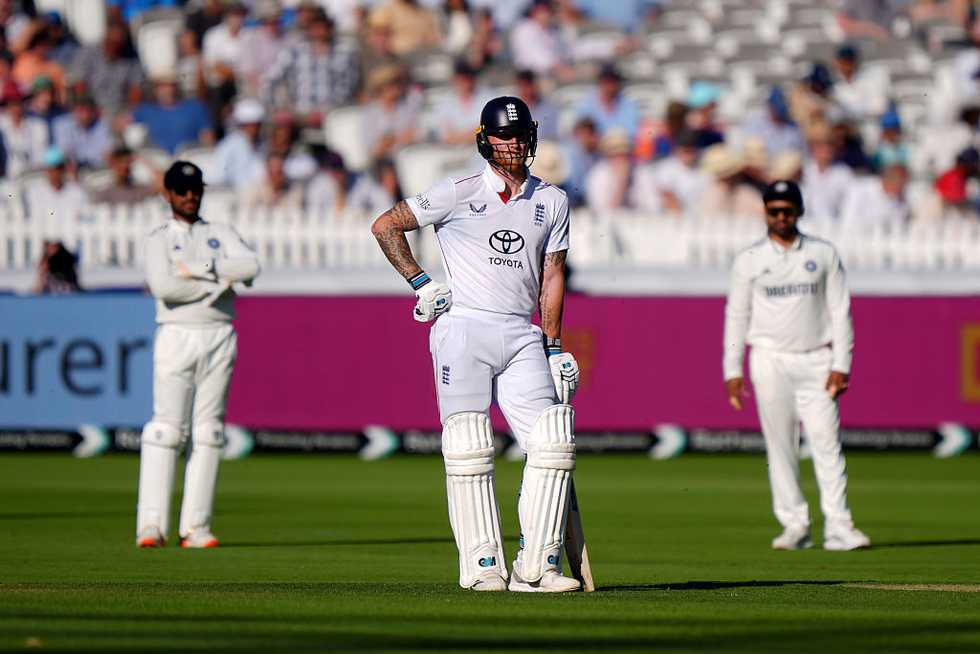
Wider lines, quieter battles: the waiting games at Lord's

It took India all of four deliveries on the sun-baked opening day of the Lord's Test to sense that what had worked at Edgbaston might not quite hold here. Jasprit Bumrah found the outside edge in his very first over, yet didn't claim a wicket until early in the final session. Even before the buzz of the start of a Test match had a chance to settle, the ace fast bowler was already gesturing to the slip cordon to come a step forward: edges wouldn't be carrying today.
In truth, there were even earlier signs that this wasn't going to be a familiar day of Test cricket. Familiar as we've come to know and expect, at least in these parts. When Ben Stokes won the toss on a surface the colour of pressed cream biscuit under a flawless London sky, he chose to bat first, for only the second time in a home Test since 2022. England don't often get five consecutive days forecast in the 30-degree range, after all. But everything seemed set up for Bazball to dance. Except, India decided to take the music out of it.
"Welcome to boring cricket, guys," Shubman Gill's voice floated through the stump mic, half-mocking, half-manifesting. It came during the early lull after Lunch, when England, so often the architects of tempo, went 28 balls without scoring a single run. Bumrah and Mohammed Siraj had begun that session with a kind of quiet focus, each bowling almost exclusively to one batter: Bumrah to Ollie Pope, Siraj to Joe Root, with no releases offered. Just the long, slow squeeze.
What followed was an unusual session of play. India took no wickets, yet a pair of well-set, dominant batters like Root and Pope managed only 70 runs between them. Even after Bumrah and Siraj were done with their spells, India were committed to their plan: turning the day deliberately old-fashioned, designing it, ball by ball, as an act of anti-Bazball. And, tellingly, England's batters chose not to turn it into an ego contest. They waited too.
Traditionally, Test cricket in England is an off-side sport. Fast bowlers drag batters across their stumps, sending strings of deliveries just outside off, slips and gully poised, all building towards a surprise straight one. At Edgbaston just four days ago, India had flipped that script, bowling straighter, hitting the stumps more often, packing the leg-side with two catching mid-wickets. It was what was needed. It worked.
The ball did swing more at Lord's in the first 40 overs than it had in Leeds or Birmingham, but with the pitch slow and the bounce low, England's batters had time to adjust. You might have expected them to break free eventually, especially once the now-familiar complaints about the ball going out of shape began. But that deluge never arrived.
Because, India kept pushing them wider. Shubman Gill had his bowlers settle on sixth-stump lines and gave them a 6-3 off-side field. CricViz marked 25.7% of the balls bowled by India's seamers as being outside the off-stump channel, up from 15.6% at Headingley and 11.8% at Edgbaston. In fact, only 19.8% of deliveries were on the stumps, a drop from 26.5% four days ago.
That it wasn't even more stark is perhaps a mild case of an Edgbaston hangover for Akash Deep and Mohammed Siraj, who bowled much straighter lines especially from the Pavilion End. Occasionally, the slope caused the ball to drift down the batters' pads, offering easier scoring opportunities. In fact, at 24.7%, Akash had the highest percentage of balls hitting the stumps among India's seamers and also conceded runs at the highest economy rate, perhaps a reflection that Lord's demanded some slight calibration.
But still India had England muzzled with their disciplines. Even Nitish Reddy, playing just his second Test in England and finishing with two of England's four wickets to fall, didn't chase a highlight moment. He found swing but traded the idea of a magic ball for patience. And it was just what was needed here. At Edgbaston, India could push with a short-ball ploy against Jamie Smith and afford to leak runs because they were in the lead by over 500 runs there and could trade a few for a wicket. But on this opening day at Lord's, against a batting line-up capable of swift dominance, they needed the discipline their bowling coach Morne Morkel had preached: patience, sticking to the plan, and playing the waiting game.
Interestingly enough, England respected India's discipline and matched that restraint, thereby crafting a rare, deliberate tempo. The result was a unique day, India taking just four wickets but holding England to their second-lowest scoring rate in a day's play of the Bazball era, while the hosts eschewed any display of overt flair, choosing instead to lay the bricks for the battles still to come.





